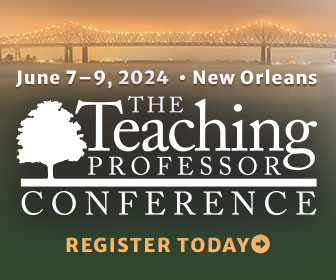Formative writing assessments, like writing-to-learn activities, provide instructors with valuable and ongoing insights into student learning. Often ungraded, these activities or assessments can create opportunities for instructors to generate formative feedback that helps students see where they are in the course, what they are doing well, and where they may need additional support to develop or deepen their learning. Without formative feedback, students may not realize their misunderstandings. This can lead to confusion and eventually may even cause students to lose motivation. Ultimately, formative assessments and their subsequent feedback make learning visible. The value of providing meaningful feedback to students, and the appropriateness of the way in which this is accomplished, cannot be overstated. In what follows, I first define low-stakes writing and highlight two easily implementable writing-to-learn activities: thinking pieces and reflective journals. Next, I introduce five constructive ways we can provide formative feedback to student writing-in-progress. Finally, I elaborate on the difference between marginal and terminal comments, which may do the work of formative or summative feedback or both.
Low-stakes writing, or writing to learn
Writing-to-learn activities are typically short, informal, and low stakes writing tasks that help students think through key ideas presented in a course. Low- or no-stakes writing asks students to use writing to connect with and learn the material in a course. As Toby Fulwiler and Art Young (1982, x) explain, “The primary function of this ‘expressive’ language is not to communicate, but to order and represent experience to our own understanding. In this sense language provides us with a unique way of knowing and becomes a tool for discovering, for shaping meaning, and for reaching understanding.” A good low-stakes writing task deepens students’ engagement with course material, promotes critical thinking, and facilitates understanding of the discipline’s methods of inquiry, analysis, and argument. So, what options do instructors have for these kinds of assignments?
“Thinking pieces,” a form of low-stakes writing, create a questioning, problem-posing environment that is student centered without being threatening. Having completed a thinking piece on a subject matter problem, students can come to class ready to discuss it. They want to find out what others said in their thinking pieces and are ready to hear different points of view. For instructors, thinking pieces offer a way to learn about students’ experiences and values which provides insight into how they can engage students more fully or coach them more effectively. Thinking pieces are formative assessments, giving an instructor a sense of a student’s learning-in-progress or a glimpse into where students are misunderstanding lectures, not appreciating nuance or complexity, and so on. Then, the instructor can reexplain concepts and monitor the progress of student learning during class or in one-to-one conferences.
In another example, reflective journals can be assigned to elicit responses to complex, difficult, or troubling readings and invite the writer to “speak back” to the reading in a musing, questioning, and probing way; the instructor may provide guiding questions for consideration after a reading, such as, “How do the main points of this reading connect to what we have discussed? Was anything unclear or confusing? What changed or enhanced your way of thinking about the topic?” Its nature, then, is to explore connections between course material and the student’s life, questions, or perspectives.
Syrene Forsman (1985, 162) highlights a practical rationale for writing to learn:
As teachers we can choose between (a) sentencing students to thoughtless mechanical operations and (b) facilitating their ability to think. If students’ readiness for more involved thought processes is bypassed in favor of jamming more facts and figures into their heads, they will stagnate at the lower levels of thinking. But if students are encouraged to try a variety of thought processes in classes, they can, regardless of their ages, develop considerable mental power. Writing is one of the most effective ways to develop thinking.
Although this genre varies considerably from instructor to instructor, in most cases, it evokes writing that is more exploratory, tentative, and personal than most academic essays. Other forms of writing to learn activities can be found at the WAC Clearinghouse.
Feedback that facilitates revision
Grant Wiggins (2012) argues that “helpful feedback is goal-referenced; tangible and transparent; actionable; user-friendly (specific and personalized); timely; ongoing; and consistent.” For example, feedback on students’ written work-in-progress, thinking pieces, or reflective journals not only provides a way for students to understand their challenges with the writing task at hand but also helps them collect strategies and questions for future writing situations.
Faculty can provide students with feedback on ungraded writing-to-learn activities that students may use to revise their work before final submission. Simply put, there are constructive responding strategies and strategies to avoid when providing feedback on students’ written work. What are constructive ways we can respond to student writing-in-progress?
- Talk about the essay, not the student. When explaining challenges with the text, avoid using “you.” For example, “You do not explain well enough” can be read as a personal attack, but “the text doesn't explain well enough” locates the concern in a more detached manner.
- Ensure that your comments reflect your priorities. Respond with the assignment’s primary goals in mind, using a hierarchy of priorities for responding to various elements. If 80 percent of your comments are about grammar, they may send the message that grammar matters more than other elements.
- Advise future action. Comments should also provide guidance for future revision or learning, even if it is a final draft. Instead of just telling students what to avoid in the future, try finding positive verbs for the same action (organize, look up, create transitions, introduce, explain, remember, include).
- Employ positive comments. It is important to praise the text for what it does well. When revising, a student who has received no positive comments is unlikely to know what is worth keeping in the draft.
- Explain good elements. Positive comments also function to support students in their learning and reinforce good writing strategies. The word “good” may give student a nice feeling, but if the comments do not explain why, they may think it is only your personal preference.
Negative responding strategies may offer little concrete direction for the writer and may exist simply to justify a grade or explain why something does not work well. In the absence of positive statements, these comments may confuse and frustrate students. Constructive responding strategies deepen the conversation with your students and encourage them to revise their work-in-progress from an informed but positive lens.
Marginal versus terminal comments
Marginal comments are either written in the margins or directly in the text of an essay, whereas terminal comments are usually lengthy and are written at either the end of the essay or on a separate page. Marginal comments are more suited for feedback on specific sections of the text; terminal comments are usually saved for more global concerns affecting the whole essay. Ultimately, it is important to provide a writer with both types of comments because their physical positioning allows you to provide different types of feedback.
Marginal comments
- Responding as a reader. You experience the reading as a person, not necessarily as a teacher, meaning that your primary concern is reading and not evaluating.
- Asking questions. The most effective comments to help students revise and develop a critical sense are comments worded as questions. Questions can refer to content, organization, or word choice.
- Noting patterns. Although our first tendency as graders is to mark every error, this practice can overwhelm the writer. It is more helpful to note patterns in organization, grammar, or punctuation. Try to highlight those that intrude most on your ability to read the paper smoothly.
Terminal comments
- Positive comments. Tell the student what you liked about the paper first.
- Priorities. Do not try to comment on every problem. Limit your criticisms to a few key concerns so as not to overwhelm the student.
- Specific suggestions. Offer suggestions for how the student can address the concerns.
- Notation of patterns. Note patterns here if you have not already done so in the margins.
- Suggestions about resources. Point out resources students can refer to or invite them to come and see you during office hours (or both). Resources might include the writing center, peers, yourself, a grammar handbook, or a content-specific reference.
All in all, you will (1) want to be selective in your marginal comments and (2) use the terminal comment to help guide their interpretation of your marginal comments. All margin comments on a single page should be legible at a glance. No page should be crammed entirely full of comments; no page should be without comment. At the same time, the terminal comments should summarize what is most important, point out where there is room to demonstrate more learning, and redirect the student to improve their work through concrete directions or suggestions.
The bottom line
Our goal as instructors is to design a classroom environment in which students learn. The purpose of writing to learn is to monitor student learning while providing timely, in-process evaluations of comprehension during the instructional process rather than after.
References
Forsman, Syrene. 1985. “Writing to Learn Means Learning to Think.” In Roots in the Sawdust: Writing to Learn Across the Disciplines, edited by Anne Ruggles Gere, 162–174. National Council of Teachers of English.
Fulwiler, Toby, and Young, Art. 1982. Language Connections: Writing and Reading Across the Curriculum. National Council of Teachers of English.
WAC Clearinghouse. n.d. What Is Writing to Learn? https://wac.colostate.edu/resources/wac/intro/wtl.
Wiggins, Grant. 2012. “Seven Keys to Effective Feedback.” Educational Leadership 70, no. 1. https://www.ascd.org/el/articles/seven-keys-to-effective-feedback.
Vittoria S. Rubino, PhD, is assistant director of the Mounger Writing Center in the West Point Writing Program at the United States Military Academy. She earned her doctorate in composition and rhetoric from St. John’s University and has a background in instructional design, student support, faculty development, and writing pedagogy.













